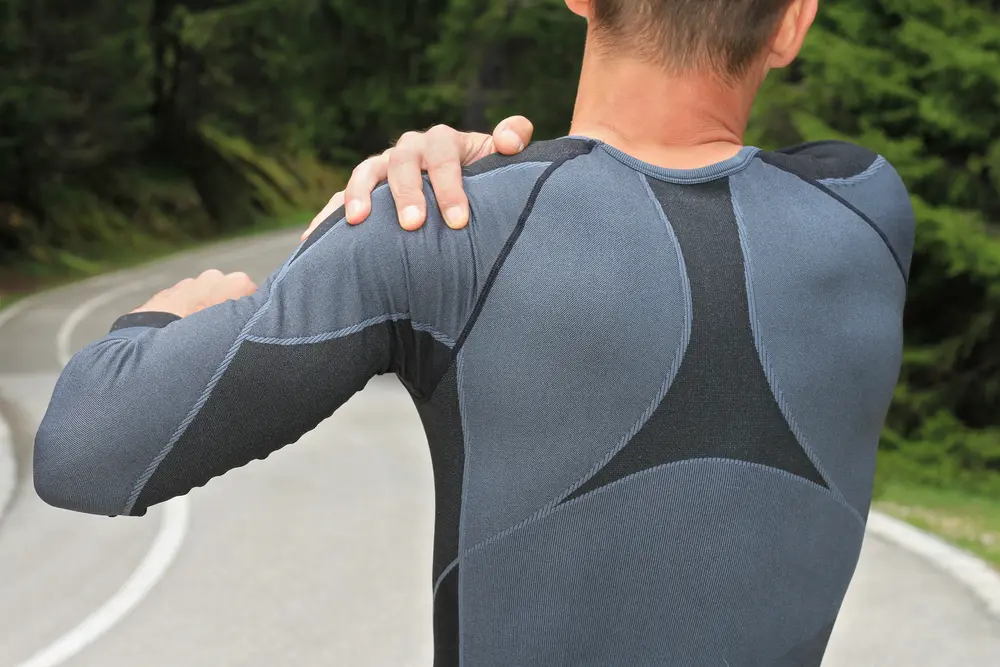Shoulder arthritis can significantly impact daily activities, making even simple movements painful and challenging. Fortunately, a range of treatment options is available, from conservative care to surgical interventions, to help relieve pain and restore function. Whether you’re experiencing mild discomfort or severe joint damage, understanding your options is the first step toward relief!
What Is Shoulder Arthritis?
Shoulder arthritis develops when the cartilage that protects the bones in the shoulder joint gradually deteriorates with time. Without this protective layer, bones begin to rub against each other, causing pain, stiffness, and inflammation.
Common Causes of Shoulder Arthritis
- Osteoarthritis (Wear and Tear Arthritis) – The most common form, caused by the gradual breakdown of cartilage due to aging and joint overuse.
- Rheumatoid Arthritis (RA) – An autoimmune condition where the body’s immune system attacks the lining of the joint, leading to inflammation and joint damage.
- Post-Traumatic Arthritis – Develops after a shoulder injury, like a fracture or dislocation.
- Avascular Necrosis (AVN) – A condition where the blood supply to the shoulder joint is disrupted, leading to bone deterioration.
Symptoms of Shoulder Arthritis
- Persistent shoulder pain, especially with movement
- Stiffness that worsens over time
- Grinding or clicking sounds when moving the shoulder
- Swelling and tenderness around the joint
- Limited range of motion, making it difficult to lift objects or reach overhead
If you experience these symptoms, seeking medical evaluation early can help slow disease progression and improve outcomes.
Conservative Treatment Options
For many people, non-surgical treatments can effectively manage shoulder arthritis and delay the need for surgery.
Lifestyle Modifications
- Activity Modification – Avoid repetitive overhead movements and high-impact activities that put stress on the shoulder.
- Weight Management – Maintaining a healthy weight reduces stress on the joints.
Physical Therapy & Exercise
- Gentle range-of-motion exercises help maintain flexibility and prevent stiffness.
- Strength training builds muscle around the joint to improve support and stability.
- Posture correction exercises reduce strain on the shoulder.
Medications for Pain Relief
- Nonsteroidal Anti-Inflammatory Drugs (NSAIDs) – Medications like ibuprofen and naproxen reduce pain and inflammation.
- Acetaminophen (Tylenol) – Provides pain relief for arthritis that is mild to moderate in severity.
- Topical Pain Relievers – Creams and gels with menthol or capsaicin can help ease joint pain.
Corticosteroid Injections
For more severe pain, corticosteroid injections can provide temporary relief by reducing inflammation directly within the joint. However, repeated injections over time may weaken surrounding tissues, so they are typically used sparingly.
Hyaluronic Acid Injections
Hyaluronic acid, a natural component of joint fluid, may be injected into the shoulder to improve lubrication and reduce stiffness, although its effectiveness varies from person to person.
When Surgery Becomes Necessary
If conservative treatments no longer provide relief and daily activities become increasingly difficult, surgical options may be considered.
Arthroscopic Surgery
- Best for: Mild to moderate arthritis with minimal joint damage.
- Procedure: A minimally invasive surgery where small instruments are used to remove damaged cartilage, smooth out bone surfaces, and clean the joint.
- Recovery: Faster than open surgery, with many patients resuming activities within a few weeks.
Shoulder Joint Replacement (Arthroplasty)
- Best for: Severe arthritis with significant cartilage loss and bone-on-bone friction.
- Procedure: The damaged joint surfaces are replaced with artificial components to restore smooth movement.
- Types of Replacement:
- Total Shoulder Replacement – Both the ball and socket of the shoulder joint are replaced.
- Reverse Shoulder Replacement – Used when rotator cuff damage is present; reverses the ball-and-socket positioning for improved function.
- Recovery: Full recovery can take several months, but many patients experience long-term pain relief and improved mobility.
Shoulder Fusion (Arthrodesis)
- Best for: Severe cases where joint replacement is not an option.
- Procedure: The bones of the shoulder joint are fused together to eliminate movement and reduce pain.
- Limitation: While it stabilizes the shoulder and reduces pain, it also significantly limits range of motion.
Early Intervention Leads to Better Outcomes
If you’re experiencing shoulder pain and stiffness, early intervention is key to slowing progression and preserving joint function. Consulting with an orthopedic specialist like Dr. Samuel Koo can help determine the best treatment approach based on your condition’s severity and lifestyle needs.
Contact shoulder specialist Samuel Koo, MD to schedule an appointment to take control of your shoulder health and improve your quality of life.
Sources:
https://www.hopkinsmedicine.org/health/conditions-and-diseases/shoulder-arthritis
https://www.ortho1.com/blog/best-options-for-relieving-arthritis-pain-in-the-shoulder




